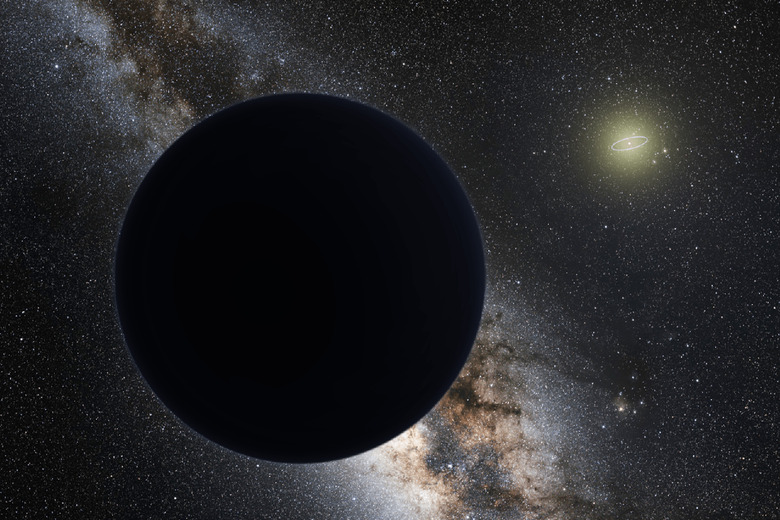Mythical 'Planet 9' Might Actually Just Be A Bunch Of Very Rude Asteroids
Remember "Planet 9"? No I'm not talking about Pluto. That ship has sailed. I'm talking about the maybe-kinda-sorta hidden planet that might-kinda-maybe be lurking at the very distant edge of our Solar System. Scientists have been searching for it for a while now and come up with plenty of evidence to suggest that something is out there, but exactly what it is remains a mystery. Now, a new theory has emerged that explains away the presence of Planet 9 in favor of something entirely different.
Speaking at a meeting of the American Astronomical Society, Jacob Fleisig of the University of Colorado at Boulder presented a tantalizing new bit of research. Fleisig, an undergraduate in astrophysics, and his team of researchers suggest that perhaps a large singular body isn't what is causing the symptoms of Planet 9, but instead a large grouping of asteroids that are pulling on neighboring bodies.
Many astronomers point to the peculiar movements of bodies in the outer reaches of the Solar System as proof — or at least evidence — that something else is hiding there. Many well-documented objects appear to move in a way that would only be possible if a large body was exerting gravity upon them. Calculations have put the size of the unknown planet at up to ten times the mass of Earth, but Fleisig's team is reimagining things.
The researchers calculated the mass of hundreds of trans-Neptunian objects and discovered that it wouldn't be a stretch for similar bodies to create enough gravitational pull to yank objects as large as dwarf planets into bizarre orbits. If the theory is correct, it would mean that there is no Planet Nine, but that there's potentially thousands of smaller, undetected objects cruising around near the edge of our system.
In some ways it's easier to imagine a grouping of large, rocky asteroids than it is to imagine a massive unseen planet, but it's far from a confirmation. Additional research to detect bodies large and small in the area of the Solar System past Neptune could shed more light on the situation. In the meantime, we still don't know what to expect, and scientists can't seem to agree on that either.
